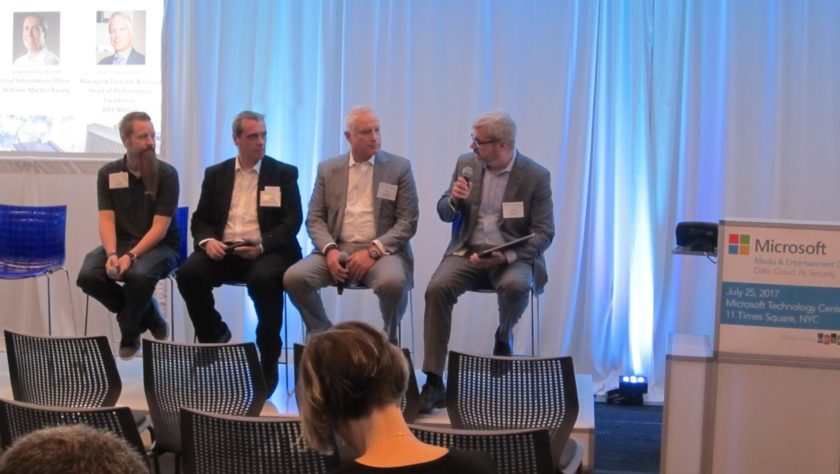Connections

Bot Applications Stretch Beyond Media and Entertainment
Story Highlights
Dale Linemann, program manager for Microsoft has been working hands on with media and entertainment partners on bot technology for a while, addressing issues in their usage in everything from customer service to email support.
But where he sees the best applications of bot technology coming is with what makes media and entertainment most important: the content itself.
“It’s a really big, growing industry, and we’re really seeing bots start to pick up a lot of speed, bring a new angle to customer service and user retention,” Linemann said, speaking July 25 during a “Understanding How Bots are Used in M&E” panel at the AI, Machine Learning and Bots event in New York.
“Media and entertainment is such a big thing to tackle, because you have everything from content to support to handle, and on the media side we’ve been focusing a lot on content,” especially with the large catalogs of content that studios own, Linemann said.
When consumers interact with a bot employed for content, a user profile is quickly formed, and if the user begins mentioning shows they like, that content can then be fed to them on the back end using analytics and metadata. “It’s a great way to bring [back] a show or movie that was maybe 10 years old, that has a relation to a new movie,” he said. “It’s a great way to connect the dots.”
Data is another major area where bots can be employed in the media and entertainment space, Linemann added, especially for sports. The sheer amount of numbers involved with professional sports can be less daunting when the data is fed into a bot, giving users a clearer picture on the numbers that mean something to them.
And it’s not just media and entertainment that’s seeing major usage of bot technology today.
Graeme Hackland, CIO for Williams Martini Racing, shared how his company started pilot programs in the IT department, automating the help desk, with bots handling up to 90% of customer questions. But Hackland also sees on-the-track uses in the near future, with pit stops during races being automated by 2020, without humans making the decisions.
“The first step is to give better information to the humans using AI, and once they’re comfortable with that, remove [humans] completely, to make better decisions more often,” he said.
Jon Theuerkauf, managing director and group head of performance excellence for banking and financial services holding company BNY Mellon, said his firm is using automation to drive better customer profiles and more. “If we make a mistake, you all probably hear about it, like if we can’t make payments work, we can run into this like hundreds of billions of dollars of payments being stuck in pipes,” he said. Bot technology is helping to solve that.
Some of the bots BNY Mellon employs work in tandem with people to handle payments from third world banks that may not usually meet BNY’s risk profiles, will handle risk assessment, and will either push through the payment, or hand off the information to an actual person if more assessment is needed. “Before, that was all done by humans, and it could take 13 minutes on a complex payment,” Theuerkauf said. “[The bots] do it in 1.3 minutes.”
The company employs about 250 bots, or “virtual workers,” who work in eight-hour shifts just like normal people. However: “They don’t get sick, they don’t complain, I don’t have to do performance reviews, and I don’t have to worry about raises and bonuses,” Theuerkauf said, with the bots performing hundreds of tasks, both front office and customer-facing.
More than 300 people in the media and entertainment sector attended the inaugural Microsoft Media & Entertainment Day, which included the AI, Machine Learning and Bots event, and was held at the Microsoft Technology Center (MTC). Produced by MESA, the event featured four half-day event programs, covering content protection, video in the cloud, artificial intelligence and machine learning, and metadata’s place in the content lifecycle.









